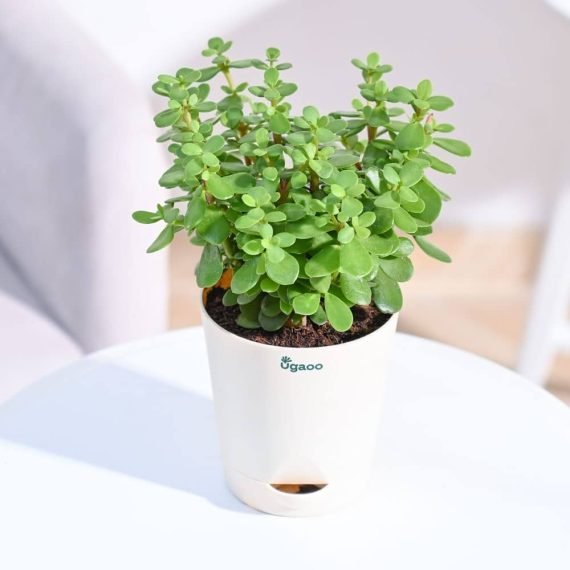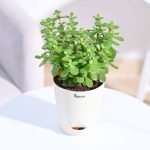Contact No.+91 9646185880 |
- 1. Place jade plants in indirect sunlight. Too much direct sunlight can scorch the leaves of young jade plants or cause the leaves of mature plants to develop red tips. Not enough sunlight can stunt their growth or cause them to look leggy and stretched out. Aim for four to six hours of indirect sunlight a day, and move the plant gradually if you need to adjust the amount of light the jade plant receives. Depending on the season, you may need to move your jade plant into full sun.
- 2. Water sparingly. Overwatered jade plants can develop root rot, so less is more when watering. Although jade plants may need a little more water in the spring and summer months, watering only once a week or even once a month should suffice. To check whether your plant needs water, poke your finger in the soil to check the moisture, and only water if the soil is dry. You can also check the leaves; puffy and swollen leaves indicate the plant is overwatered, while shriveled leaves indicate the plant is lacking in water. Since tap water can contain salts and minerals that may be harmful to the plant, filtered water is ideal.
- 3. Use a pot with good drainage. It’s important to let the soil dry out between waterings—and how long that takes depends on temperature, sunlight, and pot drainage. Terracotta clay pots are a great option, as they’re porous and allow for quicker drying, though other clay-based pots work as well.
- 4. Fertilize only once a year. After a dormant winter, jade plants enter a growing season that lasts from early spring to early fall. This window is the ideal time to apply fertilizer.
- 5. Repot every few years. As the jade plant grows, so will its roots. To encourage growth, repot young jade plants every two to three years and older jade plants every four to five years. Repotting should happen at the beginning of the growing season in early spring.
Be the first to review “Jade Plant” Cancel reply
Related products
₹60.00 – ₹150.00
₹60.00 – ₹1,500.00













Reviews
There are no reviews yet.